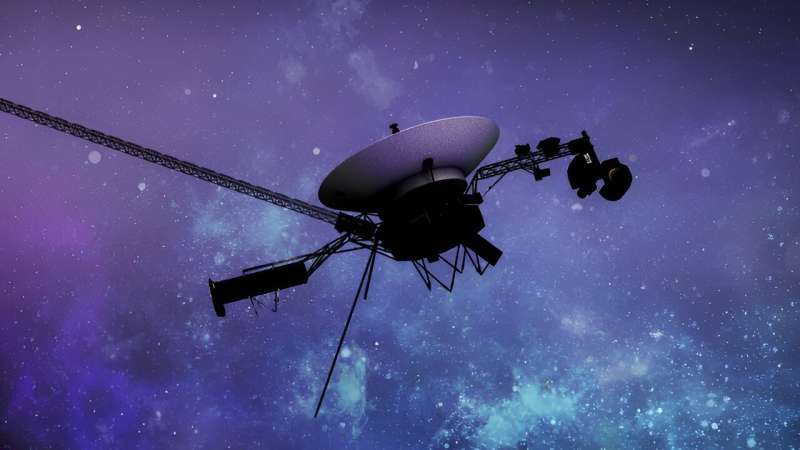This article has been reviewed according to Science X's editorial process and policies. Editors have highlighted the following attributes while ensuring the content's credibility:
fact-checked
trusted source
proofread
Engineers working to resolve issue with Voyager 1 computer

Engineers are working to resolve an issue with one of Voyager 1's three onboard computers, called the flight data system (FDS). The spacecraft is receiving and executing commands sent from Earth; however, the FDS is not communicating properly with one of the probe's subsystems, called the telecommunications unit (TMU). As a result, no science or engineering data is being sent back to Earth.
Among other things, the FDS is designed to collect data from the science instruments as well as engineering data about the health and status of the spacecraft. It then combines that information into a single data "package" to be sent back to Earth by the TMU. The data is in the form of ones and zeros, or binary code. Varying combinations of the two numbers are the basis of all computer language.
Recently, the TMU began transmitting a repeating pattern of ones and zeros as if it were "stuck." After ruling out other possibilities, the Voyager team determined that the source of the issue is the FDS. This past weekend the team tried to restart the FDS and return it to the state it was in before the issue began, but the spacecraft still isn't returning useable data.
It could take several weeks for engineers to develop a new plan to remedy the issue. Launched in 1977, the spacecraft and its twin, Voyager 2, are the two longest-operating spacecraft in history. Finding solutions to challenges the probes encounter often entails consulting original, decades-old documents written by engineers who didn't anticipate the issues that are arising today. As a result, it takes time for the team to understand how a new command will affect the spacecraft's operations in order to avoid unintended consequences.
In addition, commands from mission controllers on Earth take 22.5 hours to reach Voyager 1, which is exploring the outer regions of our solar system more than 15 billion miles (24 billion kilometers) from Earth. That means the engineering team has to wait 45 hours to get a response from Voyager 1 and determine whether a command had the intended outcome.
Provided by NASA



















